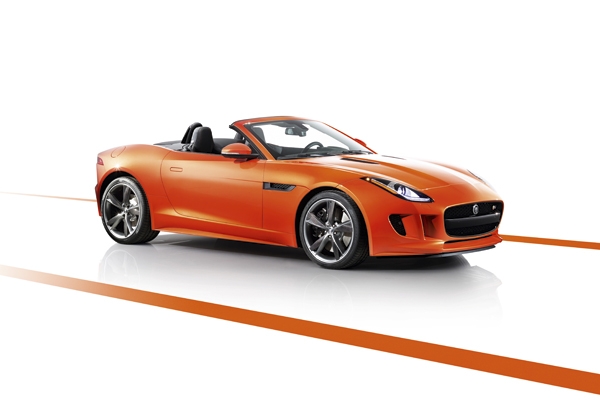In 1951, Arthur Drexler, an influential curator at New York’s Museum of Modern Art, organised an exhibition called 8 Automobiles. Drexler, who used to wear a bow tie, was one of the people who helped make ‘design’ the credible subject it is today.
The press release said it was the ‘first exhibition anywhere of automobiles selected for design’ — as, indeed, it was. Eight fine cars were presented on a dramatic fake roadway with huge photographic enlargements of details as a backdrop.
Drexler’s boss at the museum, the architect and one-time Nazi sympathiser Philip Johnson — and in those days New York’s arbiter elegantiarum — explained, ‘Automobiles are hollow, rolling sculpture, and the refinements of their design are fascinating.’ Quite so.
Ten years later, the Jaguar E-Type was launched at a lavish event in the Parc des Eaux Vives, a spiffy restaurant on the shores of Lake Geneva. International correspondents were astonished by the car’s combination of lascivious (some thought flagrantly erotic) looks, category-bending performance and accessible pricing. Ever since, the Jaguar has routinely been described as ‘the most beautiful car ever made’. In 1996 an E-Type entered the permanent collection at MoMA, the first mass-produced car to do so.
It is neither a very old nor a very new idea that machines can be beautiful. John Ruskin found machinery repellent, especially if it involved pistons whose relentless intromittent action perhaps reminded him of the coition he found so disconcerting. But the inheritors of Ruskin’s art theory, early Modernists including Walter Gropius and Le Corbusier, found cars thrilling exemplars of the mechanised perfection they wanted to bring to buildings. Indeed, both Gropius and Corb designed their own cars (although the former’s was not a success and the latter’s a high-concept publicity stunt).
Now that painting is moribund, a relic of a once-important but now irrelevant discipline, and artists will discuss anything other than beauty, manufactured products and experiences are most people’s introduction to aesthetics. Cars may not actually be art but, in speaking a language of form, colour, detail and in expressing collective yearnings for dreamworlds and escape from
tedium vitae, they have usurped art’s traditional role.
This was especially so of the original E-Type because, like the utilitarian 1959 Mini, it so completely anticipated (perhaps even influenced) the possibilities of its historical moment. Conceived before seat belts, clamps, speed limits, global warming, crash protection, Asian competition and consumerist Puritanism, the gorgeous Jaguar was what Tom Wolfe described as ‘freedom, style, sex, power, motion, colour, everything’. And all of this two years before the Beatles’ first LP.
The new Jaguar F-Type (above) will soon be on sale. Improving on perfection is a daunting task, the more so when these are precarious times for the motor car. The E-Type was launched into a world of moral and practical certainties, offering a remedy for melancholy that had very wide appeal. But, today, very few people see the car as a pleasurable instrument of liberation. Instead, it is an oppressive and expensive encumbrance whose potential always threatens to criminalise the owner.
Accordingly, the launch of the new F-Type Jaguar has been a tentative one, a drip, not a splash. It was first seen, as a teaser, in disguise at last year’s New York Auto Show. This was a nod to the significance of the American market where, 50 years before, the California sports-car cult had helped establish Jaguar’s reputation for athletic, elegant, sexualised speed. (Humphrey Bogart and Steve McQueen were early customers, a point often emphasised by public relations advisers.)
Thus the new car has to overcome the daunting obstacle of mountainous historical expectations as well as a deep trough of consumer apathy. It is less sensational than the old E-Type, but this is a more compromised world and anything more sensational than the old E-Type simply cannot be imagined.
Jaguar’s design team is led by Ian Callum, who has, over the years, made the study of the E-Type’s aesthetics a matter of meditative discipline. He understands the subtle but powerful semantics of curves and how a skilled designer can exploit minute changes in a radius to evoke a different set of emotional responses.
The old car, not so much ‘designed’ as wilfully sculpted by Jaguar’s empirical aerodynamicist Malcolm Sayer and its imperious boss Sir William Lyons, was a formal masterpiece from which nothing needed to be added nor subtracted to make an improvement.
It was, according to Callum, a matter of putting ‘enough style into a car to make it fascinating’. Form, you see, does not really follow function, it is instead an expression of artistic will that might, here and there, but not always, acknowledge certain technical constraints.
Since he cannot improve on the E-Type as curvaceous machine art, Callum has decided not to compete. No one is ever going to say the new F-Type is the most beautiful car in the world, but this is because in a global culture — fragmented and homogenised at the same time — there never could be any agreement on such a thing.
In 1957, Roland Barthes mused that ‘cars are our cathedrals’. Of course, we no longer make cathedrals. And perhaps machine art is as much a thing of the past.
It might be a fine machine, but the Jaguar F-Type makes me think that no one will ever again make a beautiful car.






Comments